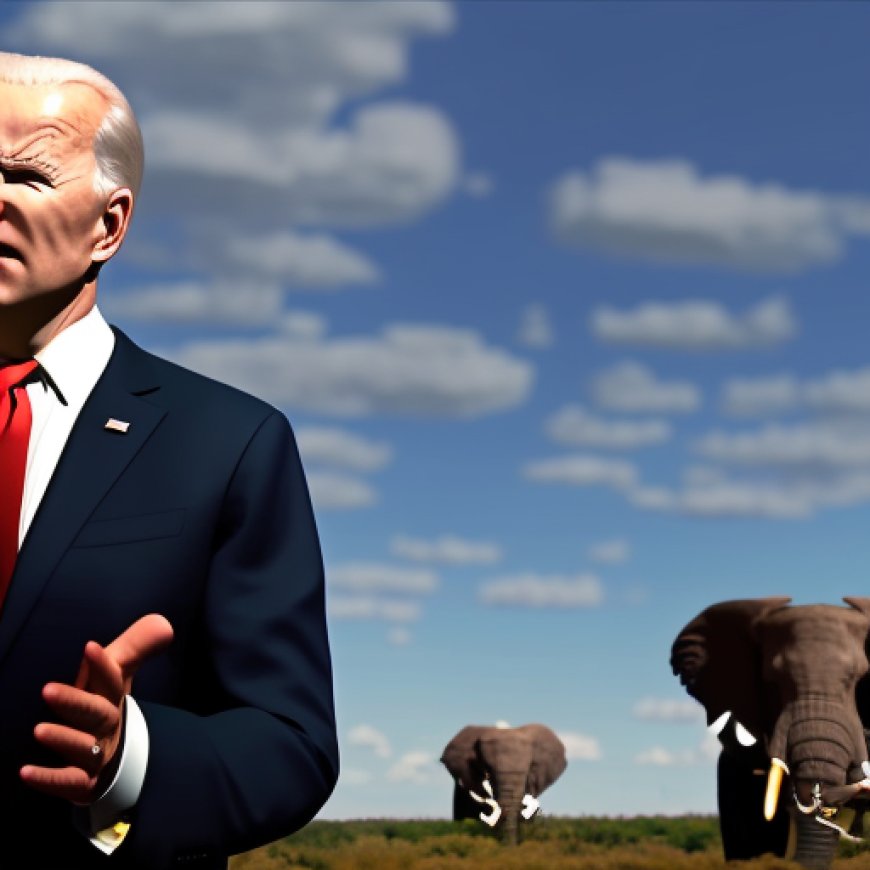President Biden Vetoes Bills Stripping Two Endangered Species of Protections
President Biden Vetoes Bills Stripping Two Endangered Species of ... Center for Biological Diversity


President Biden Vetoes Bills to Protect Endangered Species

Introduction
In a significant move towards conservation and sustainability, President Biden has vetoed bills that aimed to remove protections from two critically endangered species, namely the northern long-eared bat and lesser prairie chicken. This decision aligns with the Sustainable Development Goals (SDGs) and showcases the administration’s commitment to preserving biodiversity.
Protecting Bats and Prairie Chickens
The bills, which were pushed by congressional Republicans, sought to undermine the conservation efforts for these species. The northern long-eared bat plays a crucial role in controlling insect populations, consuming millions of insects annually. Similarly, the lesser prairie chicken is known for its elaborate breeding dances. By vetoing these bills, President Biden has taken a stand against the annihilation of these species and recognized their ecological importance.
Addressing the Extinction Crisis
President Biden’s decision also highlights the urgent need to address the extinction crisis. The northern long-eared bat has been severely impacted by white-nose syndrome, a fungal pathogen introduced in 2006, which has caused the death of millions of bats across the country. Additionally, the grassland habitats of the lesser prairie chicken on the Southern Plains have been disappearing due to agricultural activities and oil extraction.
Call for Further Action
While President Biden’s veto is a positive step, more action is required to combat the extinction crisis. The Center for Biological Diversity urges President Biden to sign an executive order to address this crisis comprehensively. Such an order would help protect the interconnected web of life that sustains us all and contribute to achieving the SDGs.
SDGs, Targets, and Indicators
1. Which SDGs are addressed or connected to the issues highlighted in the article?
- SDG 15: Life on Land
- SDG 13: Climate Action
The article discusses the protection of critically endangered species and the threats they face due to human activities. This aligns with SDG 15, which aims to protect, restore, and promote sustainable use of terrestrial ecosystems, sustainably manage forests, combat desertification, halt and reverse land degradation, and halt biodiversity loss. The article also mentions the impact of climate change on the bat species, which connects to SDG 13, which focuses on taking urgent action to combat climate change and its impacts.
2. What specific targets under those SDGs can be identified based on the article’s content?
- SDG 15.5: Take urgent and significant action to reduce degradation of natural habitats, halt the loss of biodiversity, and protect and prevent the extinction of threatened species.
- SDG 13.3: Improve education, awareness-raising, and human and institutional capacity on climate change mitigation, adaptation, impact reduction, and early warning.
The article highlights the need to protect critically endangered species like the northern long-eared bat and lesser prairie chicken. This aligns with SDG 15.5, which aims to prevent the extinction of threatened species. Additionally, the mention of the impact of climate change on bats suggests the importance of raising awareness and improving education on climate change mitigation and adaptation, which relates to SDG 13.3.
3. Are there any indicators mentioned or implied in the article that can be used to measure progress towards the identified targets?
The article does not explicitly mention any indicators to measure progress towards the identified targets. However, potential indicators could include:
- Number of critically endangered species protected
- Extent of natural habitats restored or protected
- Number of awareness-raising campaigns or educational programs on climate change and biodiversity conservation
These indicators would help assess the progress made in reducing the degradation of natural habitats, preventing species extinction, and improving education and awareness on climate change and its impacts.
4. Table: SDGs, Targets, and Indicators
| SDGs | Targets | Indicators |
|---|---|---|
| SDG 15: Life on Land | 15.5: Take urgent and significant action to reduce degradation of natural habitats, halt the loss of biodiversity, and protect and prevent the extinction of threatened species. | – Number of critically endangered species protected – Extent of natural habitats restored or protected |
| SDG 13: Climate Action | 13.3: Improve education, awareness-raising, and human and institutional capacity on climate change mitigation, adaptation, impact reduction, and early warning. | – Number of awareness-raising campaigns or educational programs on climate change and biodiversity conservation |
Behold! This splendid article springs forth from the wellspring of knowledge, shaped by a wondrous proprietary AI technology that delved into a vast ocean of data, illuminating the path towards the Sustainable Development Goals. Remember that all rights are reserved by SDG Investors LLC, empowering us to champion progress together.
Source: biologicaldiversity.org

Join us, as fellow seekers of change, on a transformative journey at https://sdgtalks.ai/welcome, where you can become a member and actively contribute to shaping a brighter future.







